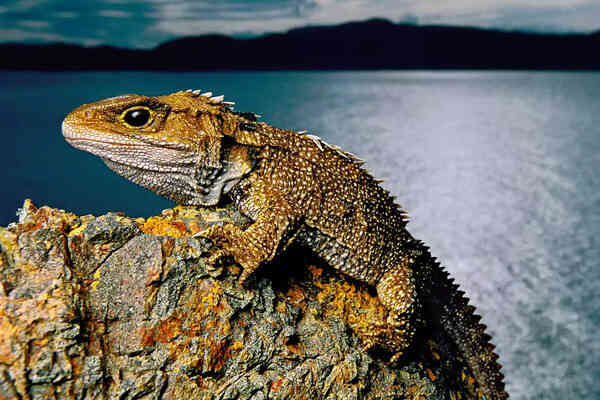Lizards are a rare family of reptiles restricted to rocky islands off the coast of New Zealand. Today, tuatara are the least diverse group of reptiles, with only one extant species: Sphenodon punctatus; however, they were once much more widespread and diverse than they are now, spanning Europe, Africa, South America, and Madagascar. There were once as many as 24 different genera of spotted lizards, but most of them disappeared during the mid-Cretaceous about 100 million years ago, no doubt succumbing to competition from more adaptable dinosaurs, crocodiles and lizards.

Lizards are nocturnal burrowing reptiles of coastal forests that forage within a limited range, feeding on bird eggs, nestlings, invertebrates, amphibians, and small reptiles. Because these reptiles are cold-blooded and live in cooler climates, lizards have extremely low metabolic rates, slow growth, and impressive longevity. Surprisingly, female tuatara are known to reproduce before the age of 60, and some experts speculate that healthy adult lizards can live up to 200 years (about the same lifespan as some large sea turtle species). Like some other reptiles, the sex of lizard hatchlings depends on the ambient temperature. Unusually warm climates lead to more males, while unusually cool climates lead to more females.
The strangest feature of lizards is their "third eye": a light-sensitive spot on the top of the reptile's head that is thought to regulate circadian rhythms (i.e., the lizard's metabolic response to daylight) play a role. night cycle). As some mistakenly believe, this structure is more than just a piece of sun-sensitive skin, it actually contains the lens, cornea, and primitive retina, although they are only loosely connected to the brain. One possible scenario is that the ultimate ancestor of the late Triassic tuatara actually had three functional eyes, with the third eye gradually degenerating over eons into the top appendage of modern tuatara.
Where do lizards fit on the reptile evolutionary tree? Paleontologists believe the vertebrate dates back to an ancient split between lepidosaurs, reptiles with overlapping scales, and archosaurs, a family of reptiles that evolved during the Triassic period into crocodiles, pterosaurs and Dinosaur. Lizards are called "living fossils" because they are the simplest amniotes (vertebrates that lay eggs on land or hatch inside the female's body). Compared with turtles, snakes and lizards, this reptile's heart is extremely primitive, and its brain structure and posture can be traced back to the amphibians, the ultimate ancestor of all reptiles.
Main Characteristics of Lizards
Extremely slow growth and low reproductive rate
Reach sexual maturity between 10 and 20 years old
Dipsera skulls have two temporal openings
Protruding parietal “eyes” on the top of the head
Lizards are classified according to the following taxonomic hierarchy:
Animals>Chordata>Vertebrates>Quadrupeds> Reptiles > Lizards
animal tags: lizard
We created this article in conjunction with AI technology, then made sure it was fact-checked and edited by a Animals Top editor.